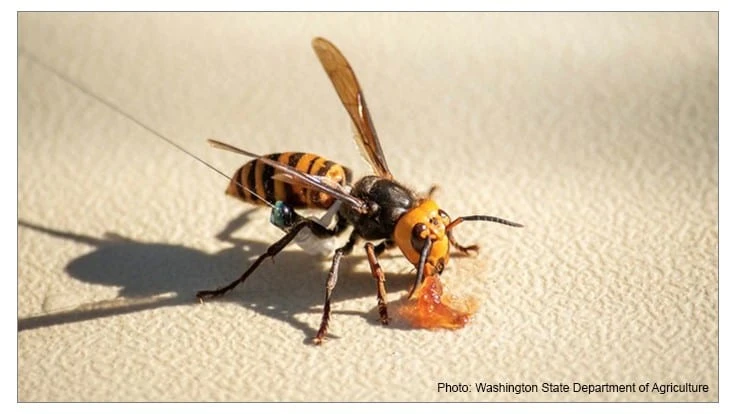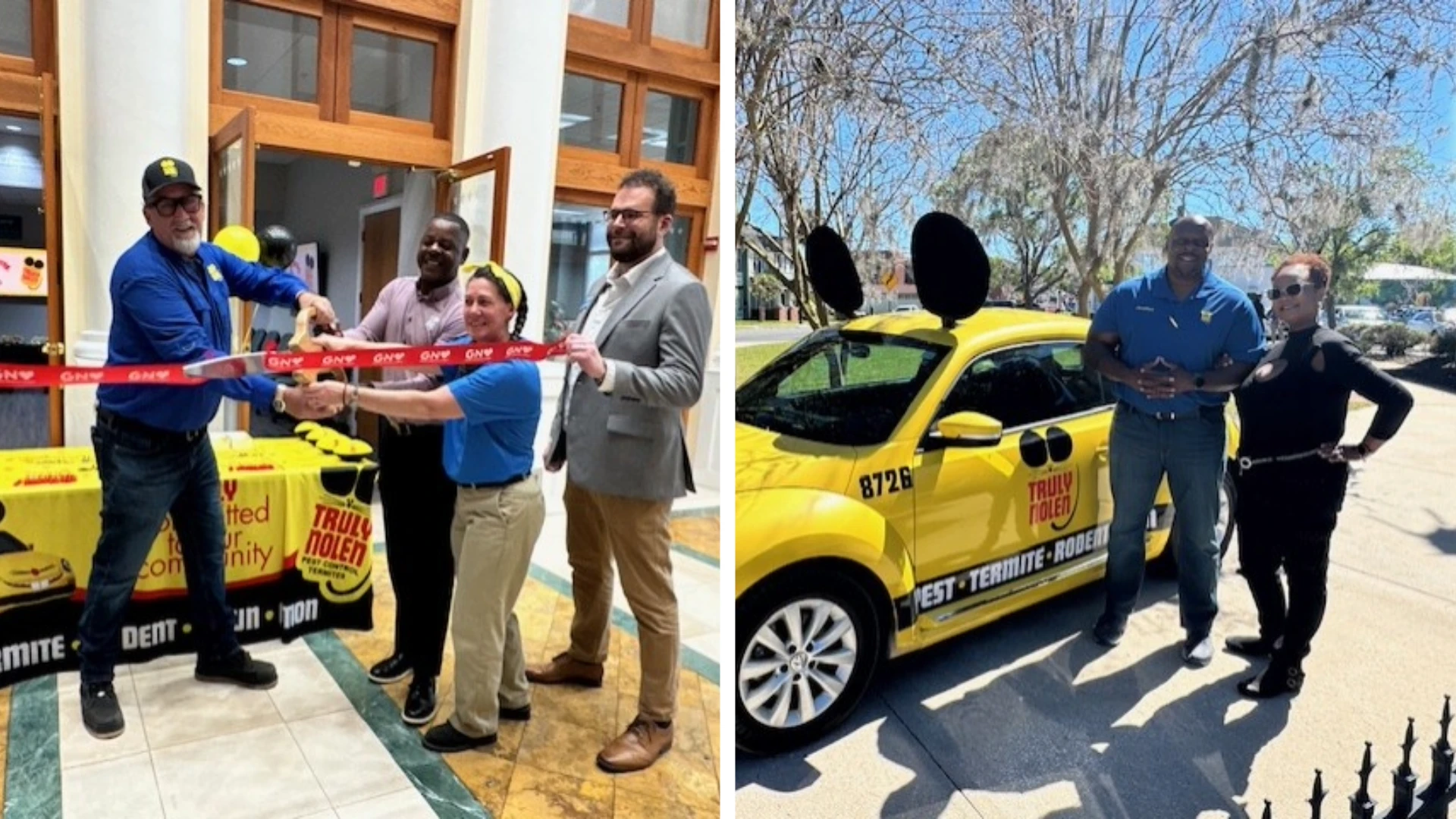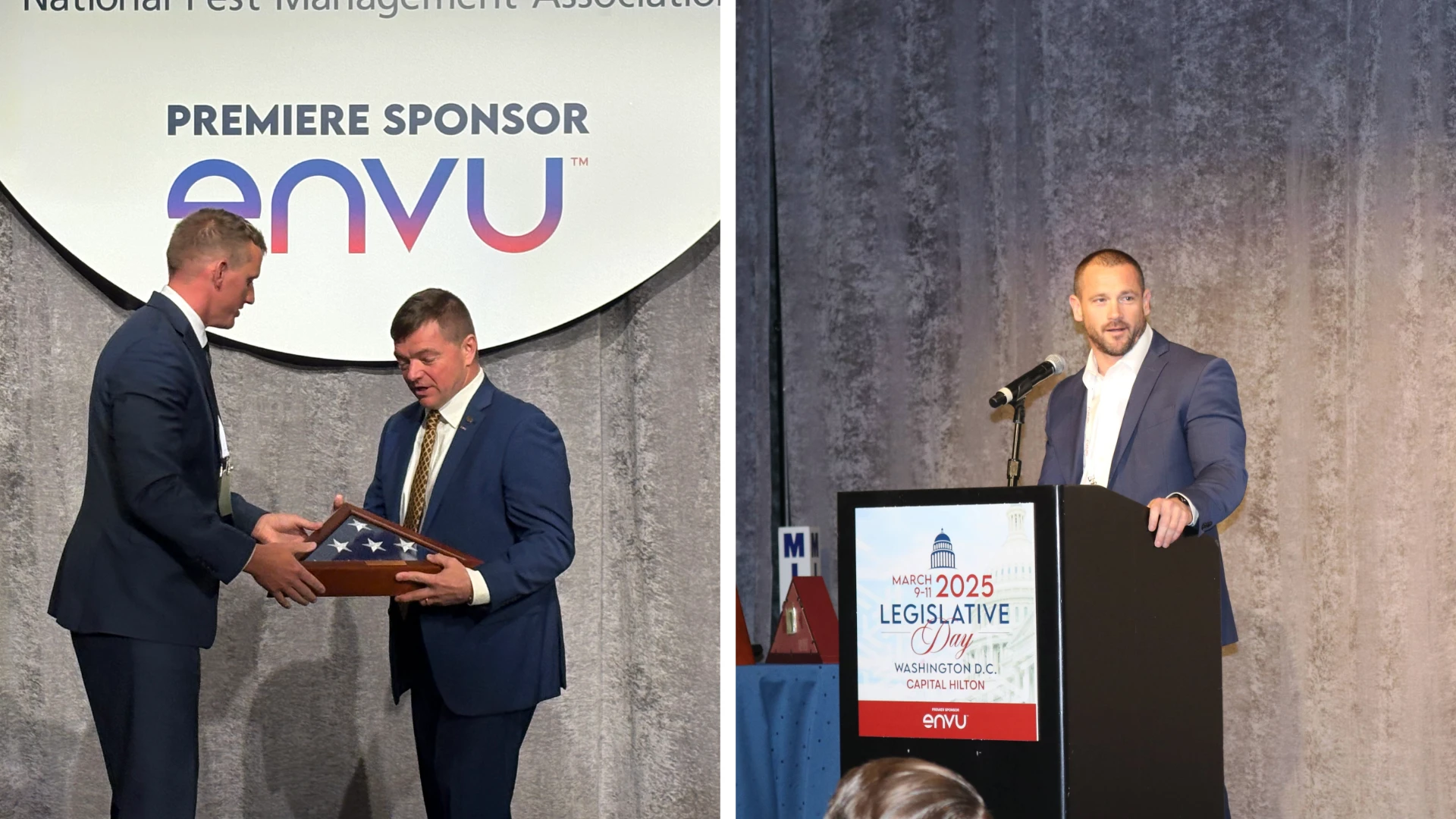
(Photo: The Washington State Department of Agriculture tied a USDA-supplied radio tag onto this captured Asian giant hornet. It is eating jam for energy before flying back to its nest. Photo by the Washington State Department of Agriculture.)
After weeks of searching, Washington State Department of Agriculture (WSDA) entomologists–—using a radio tag provided by USDA’s Animal and Plant Health Inspection Service and a trap developed by the USDA’s Agricultural Research Service–— have located and eradicated the first Asian giant hornet (AGH) nest ever found in the United States. For months, WSDA had been trying to find the nest they knew must exist near Blaine, WA, because of AGH detections in the area. But finding the nest proved extremely challenging since the hornets build nests in forested areas, typically in an underground cavity.
WSDA was racing the clock. In the late summer and early fall, Asian giant hornets can attack honey bee hives. The hornets kill all the adult bees, leaving them at the bottom of the hive. The hornets then take the hive’s bee larvae and pupae back to their nest to feed their own brood. And there’s another threat: A large and healthy nest could produce mated queens, which could create new nests in the following spring.
WSDA entomologists had a plan: Capture a live hornet, attach a radio tag to it, release it, and track the radio tag back to its nest. But they faced many hurdles: Once they captured a live hornet, they first needed to find a way to attach the radio tag securely without harming the hornet. They also needed a strong enough signal to track the tag, adequate battery life for the operation and the ability to move through rough terrain with the tracking equipment. That’s where USDA’s Animal and Plant Health Inspection Service (APHIS) came in.
APHIS’ Otis Pest Survey, Detection & Exclusion Laboratory in Massachusetts had developed expertise in using radio tags on insects. “For two years, APHIS scientists have been attaching radio tags to the spotted lanternfly to study their movements,” said APHIS Entomologist Miriam Cooperband. “These invasive insects have been found in several East Coast states and can attack many tree species and crops. The tags worked well for us, and we were happy to offer them to our Washington state colleagues, along with the antenna, receiver and tutorials.”
Using a radio tag from APHIS, WSDA entomologists tracked the signal to a dead tree but they didn’t see evidence of a ground nest. Then a few buzzing hornets got the attention of WSDA Managing Entomologist Sven-Erik Spichiger. He looked up and saw AGHs entering and leaving a crevice about 8 feet up in the tree. Nest found! Two days later, Spichiger and his team with a representative from APHIS plugged the nest with foam, wrapped the tree in plastic, and vacuumed out the hornets. To complete the eradication, they injected carbon dioxide into the tree to kill any remaining AGH.
In a recent press conference, Spichiger noted that, given the radio tag’s strength, “I’m pretty confident as long as we can get live hornets, we can follow them back, and that really gives us a great tool in an overall eradication program.”
Now that they’ve shown that it’s possible to find and eradicate a nest, the hunt continues for any other AGH nests that might be in the area.
Source: USDA
Latest from Pest Control Technology
- Understanding Rodents and Bird Flu
- Green Pest Solutions Awards Safest Driver New 2025 Ford F150
- UF/IFAS Sheds Light on Tiny Invaders During Termite Awareness Week
- Registration Open for Lawn & Landscape Technology Conference
- Fleetio Launches Automotive Service Excellence Scholarship
- WorkWave Appoints John Phelan as CTO
- PMPs Use Capitol Hill Visits to Push for Preemption
- 20 Trapping Tips





